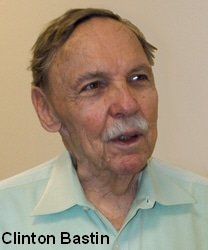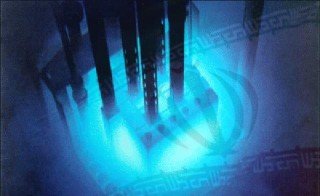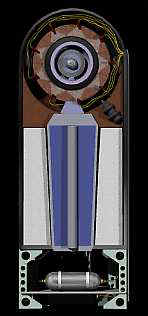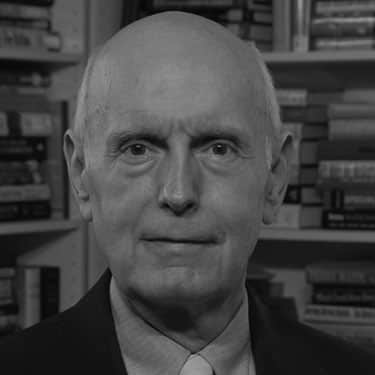To Run a Publication Like VT Takes A Mix of Talents, Both Young and Old
by Jim W. Dean, VT Editor … featuring Clinton Bastin
 Clinton Bastin is a WWII Marine. After graduating from Georgia tech with a chemical engineering degree he had a long distinguished career with the Dept. of Energy, over 40 years.
Clinton Bastin is a WWII Marine. After graduating from Georgia tech with a chemical engineering degree he had a long distinguished career with the Dept. of Energy, over 40 years.
He started out at the US Atomic Energy Commission directing programs for production of nuclear materials and nuclear components for weapons from 1955 through 1971 and was a consultant to US national security agencies on nuclear weapon threats in other nations from 1972 through 1996.
I was fortunate to find him right here in Atlanta, a luck of the draw. He has been a great help in filling us in on not only the Cold War era, but gave us a lot of insight into the bogus Iran nuclear threat which he debunked in spades.
This included consulting the President, the FBI’s WMD section, and Israel’s Prime Minister.
The New York Times has published some of his letters to the editor on the Iran nuke alleged threat. A man with his platinum resume who says all the hypemeisters are wrong is not loved in many circles.
We found it odd that all of the major media people you would expect to be beating his door down for interviews were not. That is what is called an anomaly in the Intel biz. And many of those are found not only in what people do that has a whiff to it, but what they don’t do.
How good is he? I will let you decide. Here are some of his qualifications from a very good interview we published in March. Parts of it are shocking.
Clinton Bastin was responsible for the U.S. Atomic Energy Commission(AEC)’s reprocessing of plutonium, and plutonium scrap operations, plutonium-238 production, transuranic materials processing, tritium and deuterium production for weapons programs, radioactive waste management, and related activities at the Department of Energy’s Savannah River Plant in South Carolina.
He was also involved in the diplomatic side of U.S. international nuclear efforts, and he was president of the Federal Employees Union at the Department of Energy headquarters.
Upon his retirement, Bastin was recognized by the DOE in a Distinguished Career Service Award, as the U.S. authority on reprocessing and initiator of total quality management and partnering agreements.
Clinton has been a passionate critic of the Department of Energy, one of the main issues being having it run by academics instead of engineers who had the actual experience in running operations and all the complex problems involved.
I share a chemical engineering background with Clinton, albeit one that would fit in a thimble. But it did help me follow the complexities of enriching uranium to bomb use levels, and then a whole different set of complexities for building them, and a third in mounting them in a delivery system.
One bad move and you can blow a place up…a big place. And accidents have happened, overseas and here, but fortunately not the ones that go bang.
Below is his latest message in a bottle with copies to all those who are supposed to get them. So we are happy to share with you what a man who has been there and done that feels about Iran as a nuclear threat.
You might want to ask yourself why so many smart and informed people, who know better, are pushing this threat. Who benefits from the hype?
________ – ________
Subject: IRAN’S NUCLEAR PROGRAMS
From: Clinton Bastin
To: Prime.Minister’sOffice@it.pmo.gov.il ; Consul General of Israel Sec – Atlanta ; Seyed Hossein Mousavian ; iran@un.int ; Official.Mail@iaea.org ; GPS@CNN.COM
Cc: NEW YORK TIMES Sent: Sunday, April 08, 2012 6:01 PM
Dear Mr. Prime Minister:
 Israel’s defense minister Ehud Barak’s discussions with CNN’s Fareed Zakaria this morning reflect lack of understanding of nuclear weapons and the technology for their production and the importance of nuclear power and medical isotopes.
Israel’s defense minister Ehud Barak’s discussions with CNN’s Fareed Zakaria this morning reflect lack of understanding of nuclear weapons and the technology for their production and the importance of nuclear power and medical isotopes.
Please share the following information with Mr. Barak, other members of your cabinet and others.
Iran would not sacrifice its multi-billion dollar nuclear programs and risk a military attack for the dubious possibility of having a one kiloton yield, gun-type nuclear weapon many years from now.
Claims of a weapon threat from Iran’s fully safeguarded nuclear programs result from lack of understanding by US and IAEA officials and others of the technology for production of nuclear weapons.
The claims also reflect lack of appreciation of the need for nuclear power for transition from overuse of oil and other fossil fuels and radioactive isotopes for medicine, chemical development, agriculture and other industries. The history of Iran’s plans for nuclear power since 1970 justifies the decision not to rely on other nations for slightly enriched uranium.
Iran’s plan for nuclear power began when its then ally the United States lost the ability to recover enough oil to meet its demands. Iran Shah Reza Pahlavi and US President Richard Nixon recognized that world ability to meet world demands would be lost within a few decades unless there was a major transition from overuse of oil. Both declared national commitments to efficient use of nuclear materials for energy.
Iran signed the Nonproliferation Treaty and ordered five large nuclear power plants from US companies. The US Department of State promised to supply reprocessing technology needed for efficient use of nuclear materials and disposal of highly radioactive wastes.
But in 1972 the US Atomic Energy Commission’s denied reprocessing technology to Iran and was supported by President Nixon. Iran cancelled the orders for US plants and ordered them from France and Germany, who agreed to supply reprocessing technology.
The 1979 Islamic Revolution interrupted Iran’s plan for nuclear power but not recognition of its need. Russia finished construction of the 1000 megawatt light water reactor at Bushehr in 2011 and plans to build two more. Cost of , and Bushehr-1 was three billion dollars.
 Because of the earlier denial of promised technology, Iran is using gas centrifuges to enrich uranium hexaflouride (UF6) gas to 3.5 % uranium-235 for power reactor fuel and to 20% uranium-235 for medical isotope production reactor fuel.
Because of the earlier denial of promised technology, Iran is using gas centrifuges to enrich uranium hexaflouride (UF6) gas to 3.5 % uranium-235 for power reactor fuel and to 20% uranium-235 for medical isotope production reactor fuel.
Gas centrifuges can also be used to enrich UF6 to 90% uranium-235, which can be converted to metal, fabricated into two components and assembled with high explosives for a simple, ‘gun-type’ nuclear weapon.
The high explosive equivalent yield for such a weapon for delivery by an Iranian missile would be about one kiloton.
But processes and facilities for conversion of 3.5 and 20% enriched UF6 to reactor fuel are not usable for the much more dangerous conversion of highly enriched UF6 to metal, fabrication of components and assembly with high explosives.
To make one nuclear weapon, Iran would need to:
* withdraw three tons of low or a half-ton of 20% enriched uranium hexaflouride (UF6) gas from fully safeguarded inventories,
* reconfigure an existing or build a new enrichment facility,
* enrich the UF6 to 90% uranium-234, the concentration needed for a weapon,
* develop processes and design and build new facilities to convert the gas to metal, fabricate two fifty-pound components and assemble them with high explosives.
 One component would be a cylinder; the other would have a cylindrical cavity. Detonation of high explosive would propel the cylinder into the cavity, causing the nuclear explosion. The conversion and fabrication processes are dangerous because of high potential for a criticality accident.
One component would be a cylinder; the other would have a cylindrical cavity. Detonation of high explosive would propel the cylinder into the cavity, causing the nuclear explosion. The conversion and fabrication processes are dangerous because of high potential for a criticality accident.
Assembly of metal components with high explosives for a weapon would be even more dangerous. An accidental detonation during or after final assembly could result in a nuclear explosion.
High explosive tests being conducted at a military base in Iran are not needed for a gun-type weapon. The IAEA should correct the claim that the tests indicate a possible nuclear weapon-related activity.
Devastating sanctions and dangerous threats against Iranians based on false claims of a nuclear weapon threat should end and negotiations for full diplomatic relations with Iran should begin.
Clinton Bastin, Chemical Engineer/Nuclear Scientist, US Department of Energy (Retired) … Atlanta, Georgia
Editing: Jim W. Dean

Jim W. Dean was an active editor on VT from 2010-2022. He was involved in operations, development, and writing, plus an active schedule of TV and radio interviews.
ATTENTION READERS
We See The World From All Sides and Want YOU To Be Fully InformedIn fact, intentional disinformation is a disgraceful scourge in media today. So to assuage any possible errant incorrect information posted herein, we strongly encourage you to seek corroboration from other non-VT sources before forming an educated opinion.
About VT - Policies & Disclosures - Comment Policy





